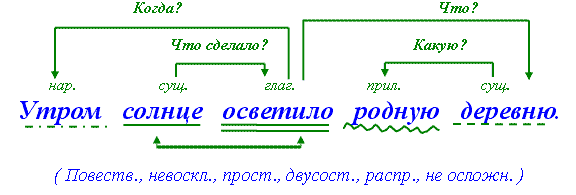Instruction
1
At the first stage you need to disassemble the proposal for the members and emphasize them: subject – one line, the predicate – two, the definition of a wavy line, addition – dotted, and circumstance – alternating dashes and dots. Sometimes you also need to specify the connection between the sentence and ask questions to each of them.
2
If the sentence is simple, specify the type of predicate: simple verbal (PGS), compound verb (CGS) or compound units (ICU). If several predicates that specify the type of each of them. If the sentence is complex, number each of its parts and make a diagram of this proposal, putting the means of communication (the unions and the Union of the word). In addition, specify the types of subordinate clauses (attributive, or adverbial verbs: clauses of time, place, causes, effects, condition, purpose, concession, comparison, manner, degree, or conjunctive) and the relationship between them (serial, parallel, or homogeneous).
3
Then describe the proposal, specifying the type of purpose of communication (narrative, interrogative or incentive), the tone (exclamation or newsletterno) and the number of grammatical basics (simple or complex: compound, compound, asyndetic). If the sentence is simple, continue the analysis, indicating the number of the main members (two-piece or one-piece: denominative, definite personal, indefinite personal, generalized personal or impersonal), the presence of minor members (common or uncommon) you have missed the main members (full or part), and specify it complicated (uniform members, separate members, the introduction or the false constructions, direct speech, an appeal, or not complicated by anything). If the sentence is complex, continue the analysis according to the same scheme, but each of its parts separately.




